


You’ve successfully made — or bought — a sourdough starter. Congratulations! Now you’ll need to regularly feed your starter to keep it alive and active for bread baking.
To feed sourdough starter, you simply discard some of the existing starter, then replace it with flour and water. Essentially, you’re giving the starter’s microorganisms food (in the form of flour) to keep them happy and healthy. Once fed, the starter will feast on the new food source, causing it to become active and bubbly, doubling in volume before it exhausts itself and begins to sink back down.
As outlined in our recipe for Feeding and Maintaining Sourdough Starter: Take 1/2 cup (113g) of the starter and place it in a medium-sized bowl. Discard the rest of the starter. (Or bake with it! See recipes to bake with discard starter here.)
Add 1/2 cup (113g) lukewarm water (tap water is fine) and a scant 1 cup (113g) unbleached all-purpose flour. Stir until everything is well combined, then return to its jar or crock. (Notice that you’re combining equal parts flour, water, and starter, by weight. That’s really the key, and that number can be flexible, as you see in our recipe for A Smaller Sourdough Starter; it’s essentially the same feeding method, but just 20g of starter, water, and flour!)
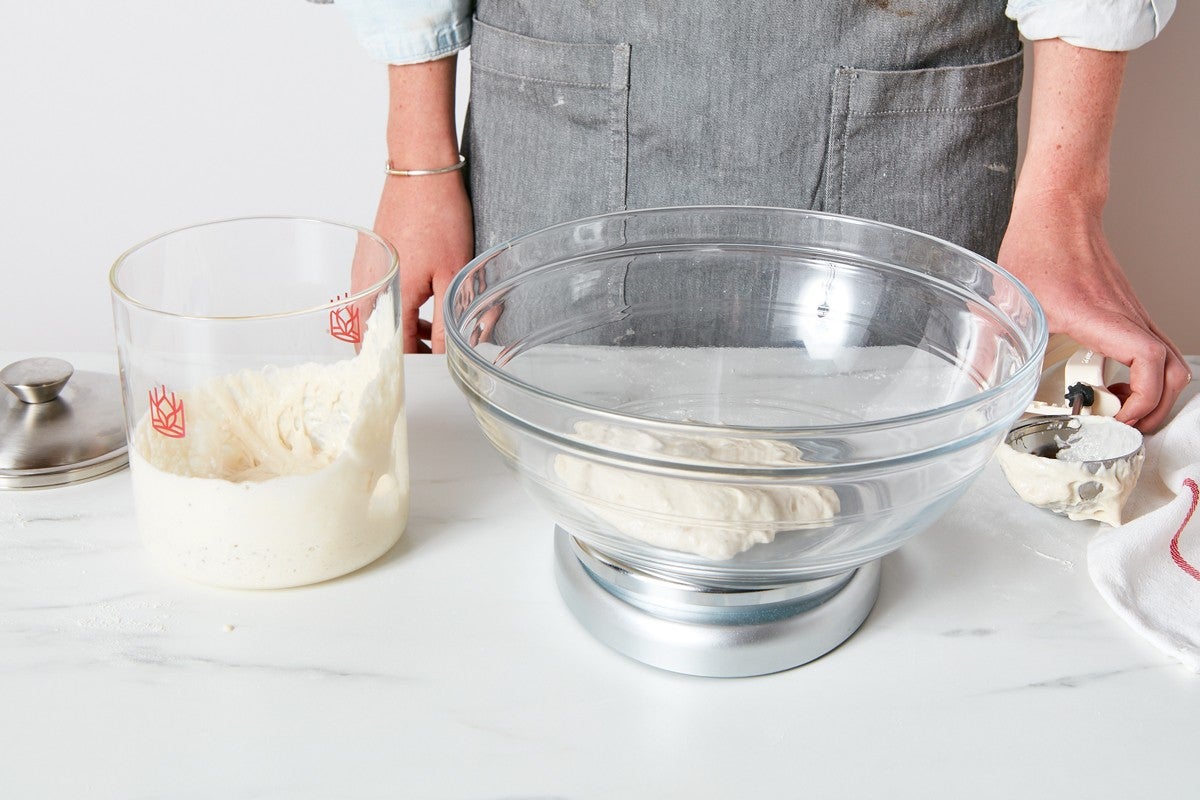
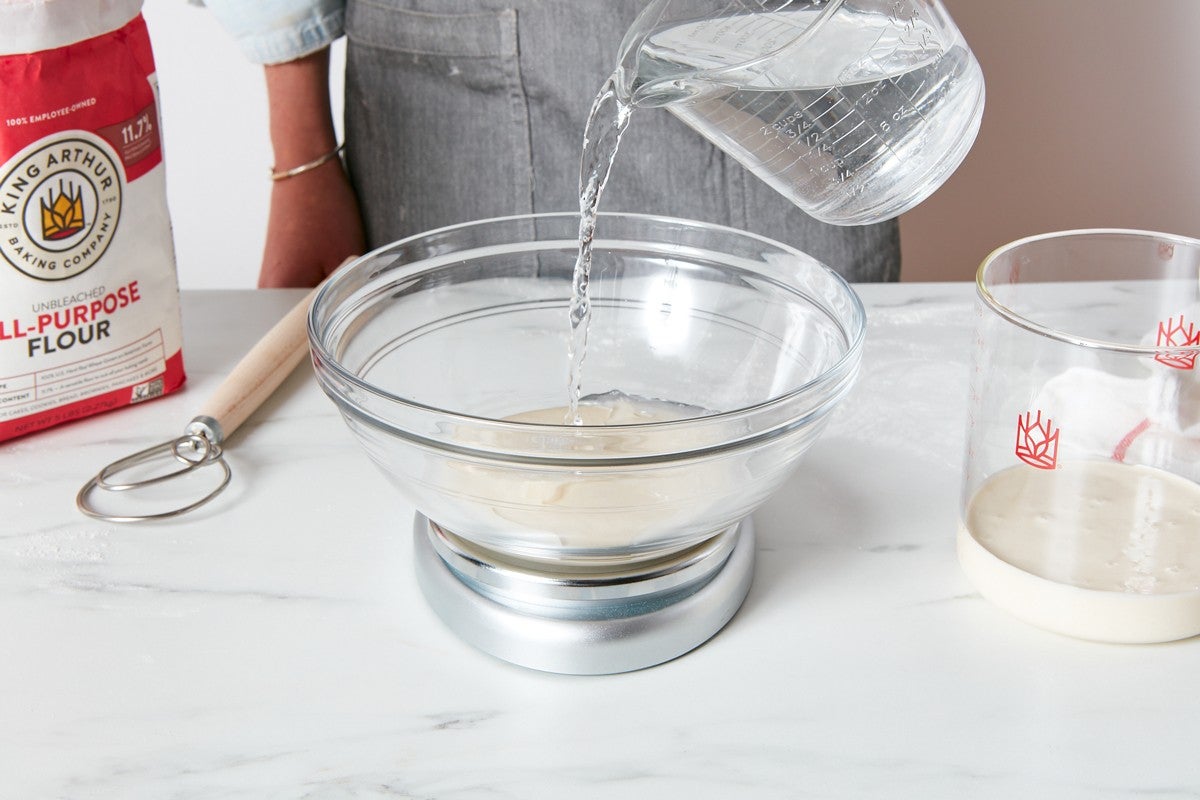
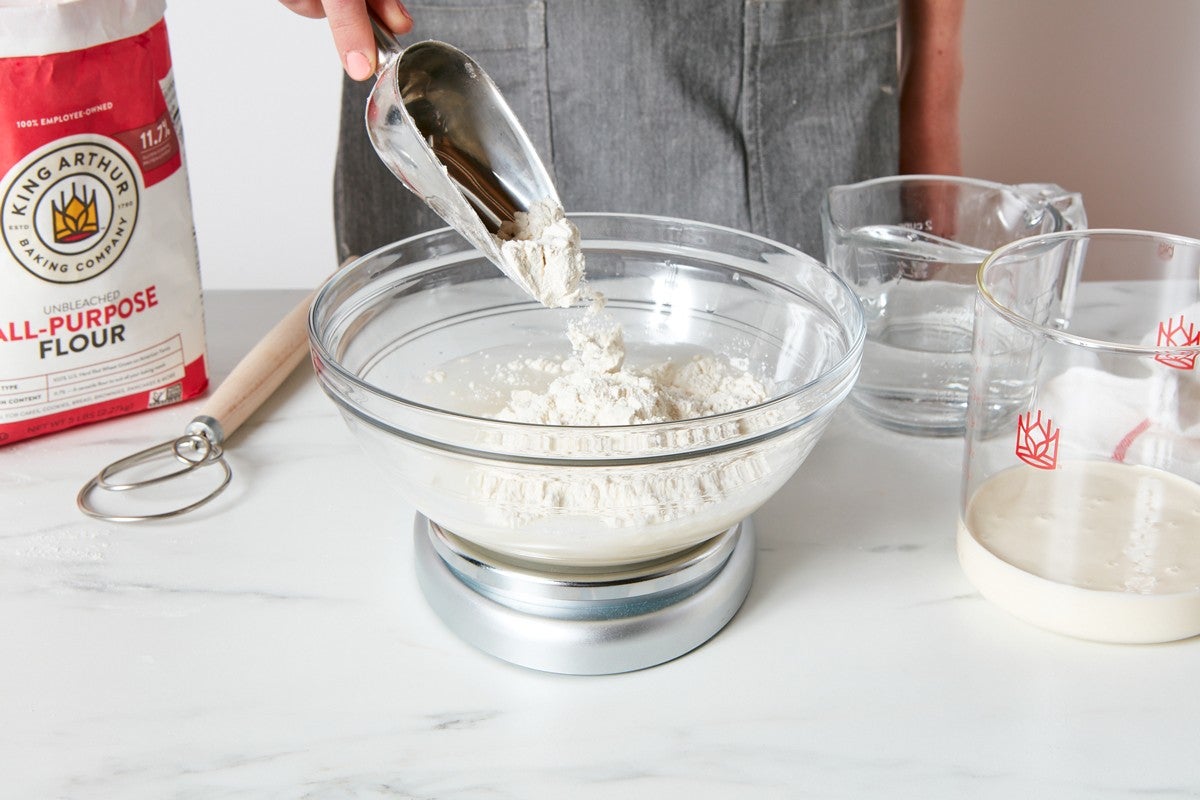
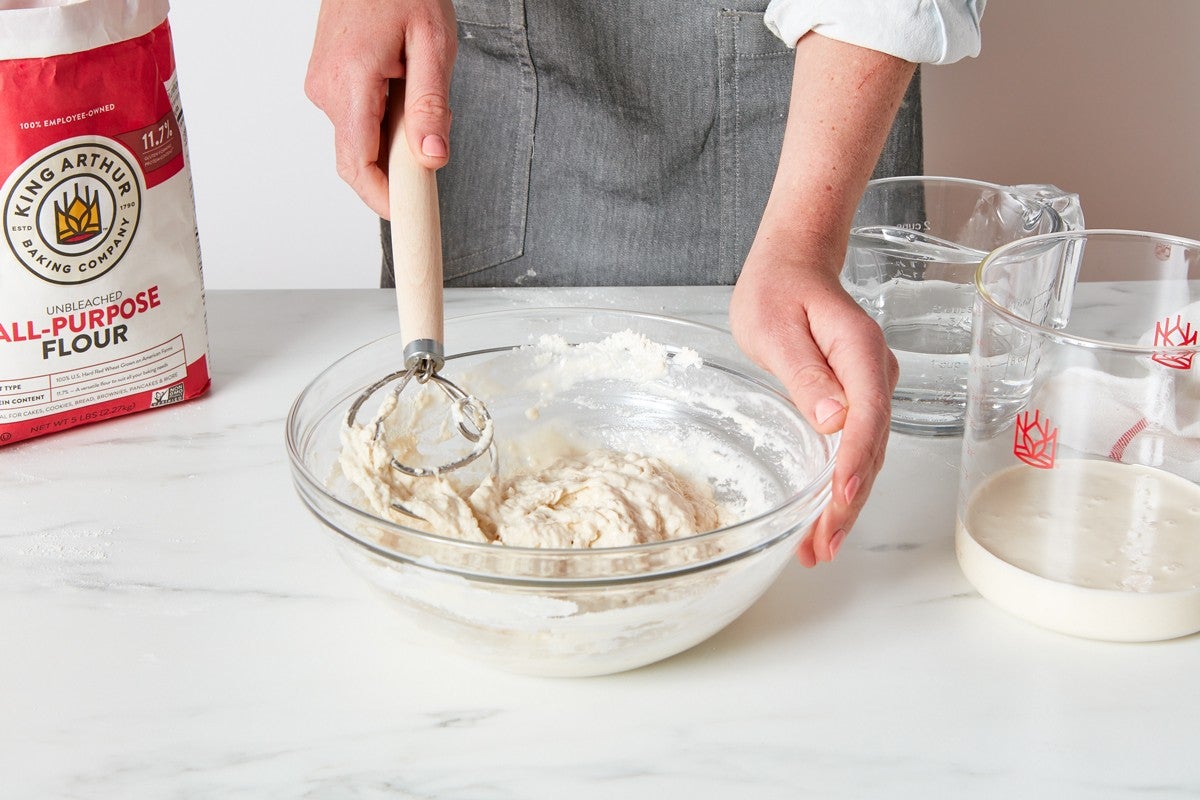
Cover the container; it shouldn’t be completely airtight, but you also don’t want the starter drying out, so a kitchen towel isn’t suitable. The lid of a sourdough crock is designed perfectly for this; a loosely screwed on Mason jar lid is also suitable.
Your starter has now been fed! At this point, you can either leave your starter out at room temperature or place it in the fridge. Read below to determine the timeline that fits you.
Baker’s note: Sourdough baking is as much art as science. This method for maintaining sourdough starter is just one of many you might choose to follow. And that's OK: If you have a process you successfully follow regularly, then stick with it.
Generally, there are two routines you may choose to regularly feed your sourdough starter. Depending on your choice, here's how often to feed sourdough starter:
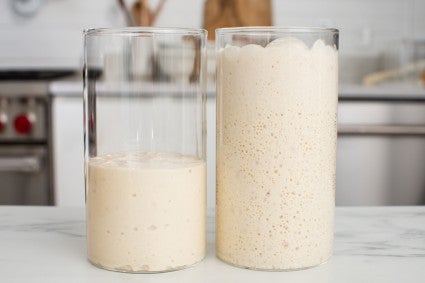
Sourdough bread recipes typically call for “ripe sourdough starter.” This refers to starter that has been fed and then doubled in volume and is showing signs of just beginning to deflate. The timing will be different depending on your sourdough starter and conditions, but generally, this occurs roughly eight hours after being fed. See more: Ripe sourdough starter: Here's what that means.
Ready for more sourdough baking? Dive into our guide on How to Bake Sourdough, which includes technique videos, frequently asked questions, and expert advice.
All photography by Rick Holbrook; food styling by Kaitlin Wayne, unless otherwise noted.


